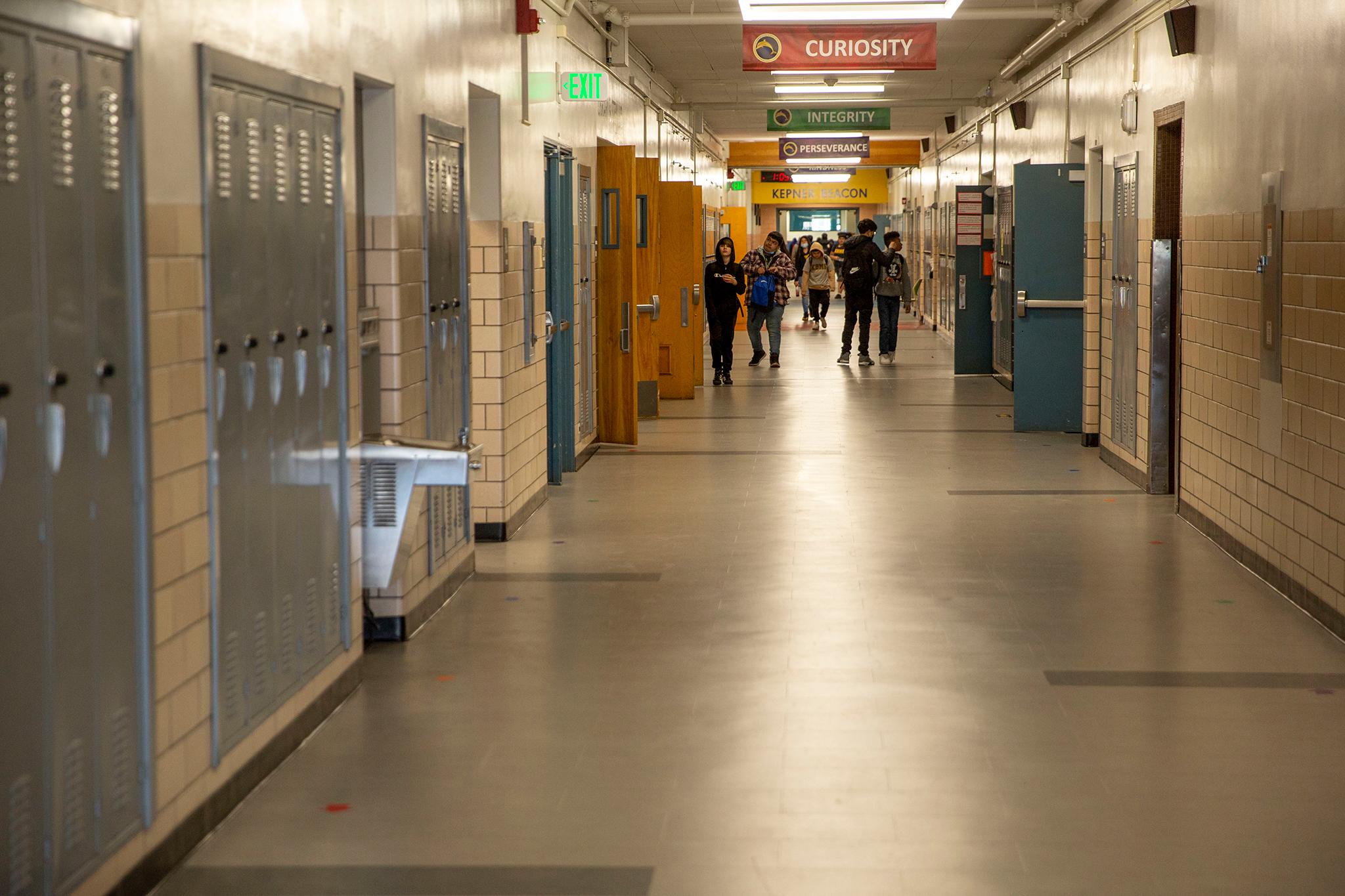Kelsey Ray, Colorado Independent
Denver education and community leaders Thursday launched a how-to guide to help more schools implement “restorative practices,” an alternative to traditional discipline methods that seeks to improve school culture, eliminate racial disparities and end the school-to-prison pipeline. Rather than simply punishing students for bad behavior, restorative justice brings offender and victim together to find a mutual solution.
The 44-page guide, School-Wide Restorative Practices: Step-by-Step, was crafted by the Denver School-Based Restorative Practices Partnership, a coalition of groups including the Denver Classroom Teachers Association, youth and parent group Padres & Jóvenes, Denver Public Schools and the National Education Association. It’s available on the partnership’s website.
DPS has been using restorative justice practices since 2006, when the district used $1 million in state grants to start pilot programs at several middle and high schools. More than a decade later, participants such as North High School and Skinner Middle School have seen improvements in culture and performance and a reduction in suspensions and expulsions. Buoyed by this success, education leaders now hope to expand such policies city-, state- and nationwide.
During a press call Thursday afternoon, partnership project manager Allison Meier and representatives from various member groups spoke about their experiences with restorative justice, the need for a how-to guide and the path moving forward.
“I think teachers need help creating this kind of culture,” said North High School alum Jhovani Becerra during the call. Before starting at North, Becerra attended a middle school without restorative practices, and he said the differences were stark.
In middle school, students were suspended and taken out of class for minor misbehaviors, sometimes for multiple days, and thus “developed a negative relationship with the school in general.” Without an opportunity to discuss and resolve the situation, he said, “They would carry with them the piece of harm that was done — they will always have that ill will toward the teacher or student that wronged them.”
In contrast, he said, North High School offered “a culture of empathy and a culture of understanding.”
Since the 1980s, the guide explains, schools have used “increasingly more punitive” discipline policies such as suspensions, expulsions and referrals to law enforcement for offenses ranging from school violence to tardiness. These policies, implemented in response to the nationwide call for “zero tolerance” for student misbehavior, “push students out of the
classroom and hinder opportunities for quality education.” Data shows that such policies disproportionately affect LGBT students and students of color.
Punitive discipline, the guide explains, is focused on guilt and blame, whereas restorative discipline focuses on problem-solving. Punitive discipline asks “What rule was broken?” and “Who broke it?” where restorative discipline asks, “Who was harmed?” and “What are their needs?”
The guide offers strategies for a smooth transition away from punitive discipline, starting with evaluating whether a school is even ready to move toward restorative justice models, and then closely monitoring staff participation and buy-in.
Joe Walden, a social worker at Skinner Middle School and a member of the Denver Classroom Teachers Association, said that Skinner saw a marked reduction in student fights upon implementing restorative practices. Over the past decade, he said, even non-believers have come around.
“Some folks had the philosophy that we didn’t need to hear from the children, they had committed some kind of offense and that just needed to be responded to by an adult,” he said. “As we evolved, and staff started to see the power of restorative work, adults started to come on board.”
Daniel Kim, state director for Padres & Jóvenes Unidos, said Denver is a model for its reliance on input from students of color and their parents, rather than top-down, mandated solutions. That matters, he said, because restorative practices are first and foremost intended to lessen the racial disparities so common in traditional disciplinary methods.
“Our role is to keep those voices in perspective,” he said.
Donna Cash, student equity and opportunity manager at Denver Public Schools, said the results over the past 10 years have been “pretty great:” The district has reduced suspensions from over 11,000 per year a decade ago to just around 4,400 now, despite growing significantly in that time. DPS has also seen an increase in graduation rates.
Kim applauded the progress, but noted that plenty of work remains to be done. Suspension rates are down, he said, but still occur at unequal rates between white students and those of color. “We need to have better data on how racial disparities are happening,” he said. “We don’t want to look at it, but we have to.”
Denver is one of the few districts nationwide that has incorporated restorative practices into its discipline policy, though others, including Oakland, Chicago and Minneapolis, are working toward that. Still, Kim said, until now, the district has been somewhat “stuck,” in that plenty of schools want to incorporate restorative justice policies but the number of schools who have actually done so has been stagnant.
“We’re not unstuck yet,” he said. “But this feels like the clearest vision and strategy to get unstuck that we’ve seen.”













